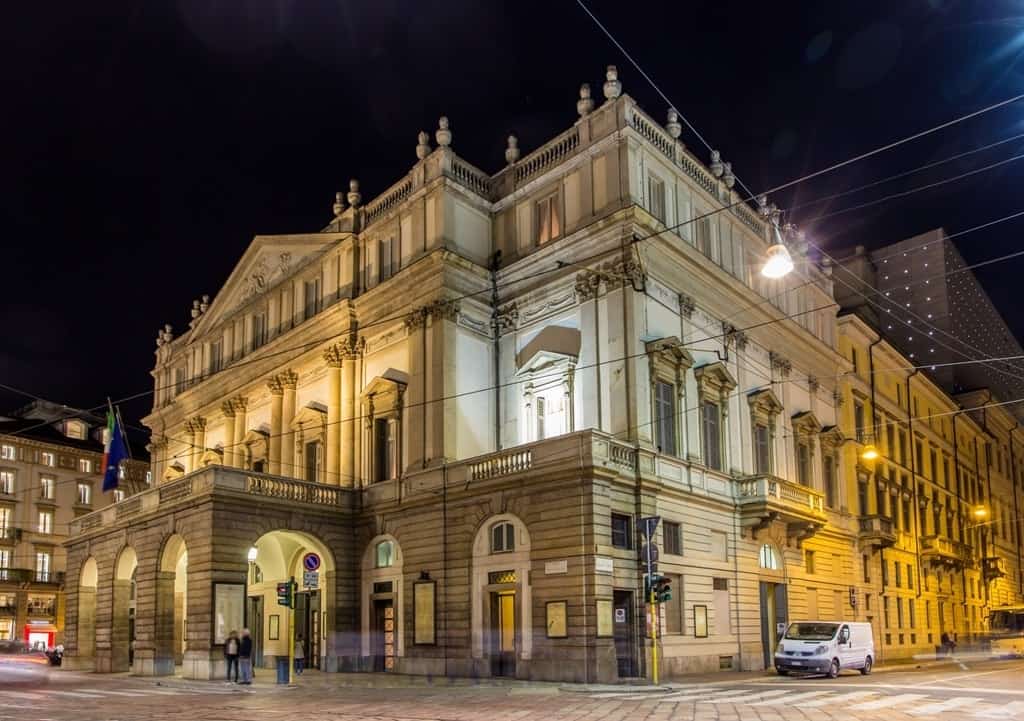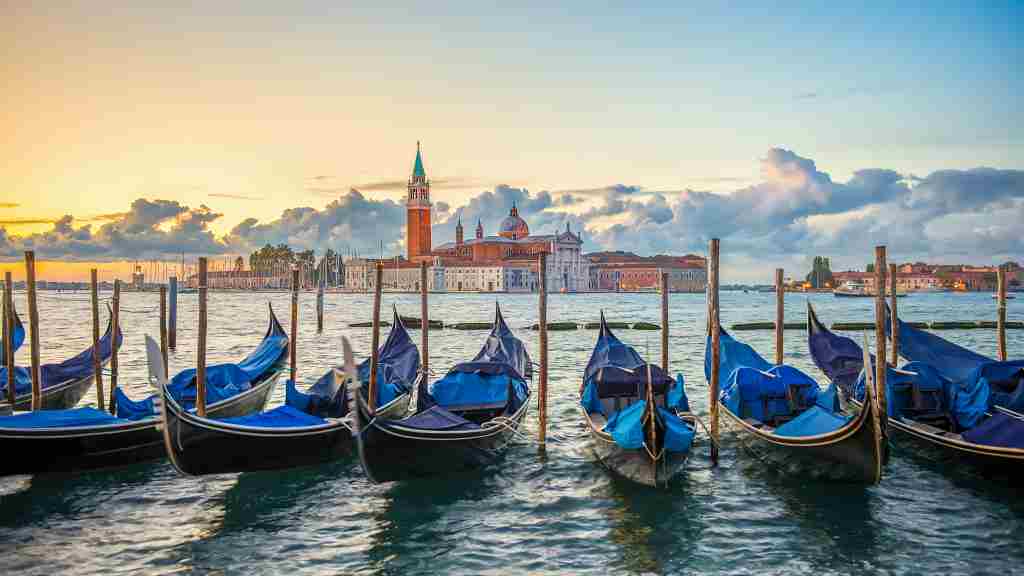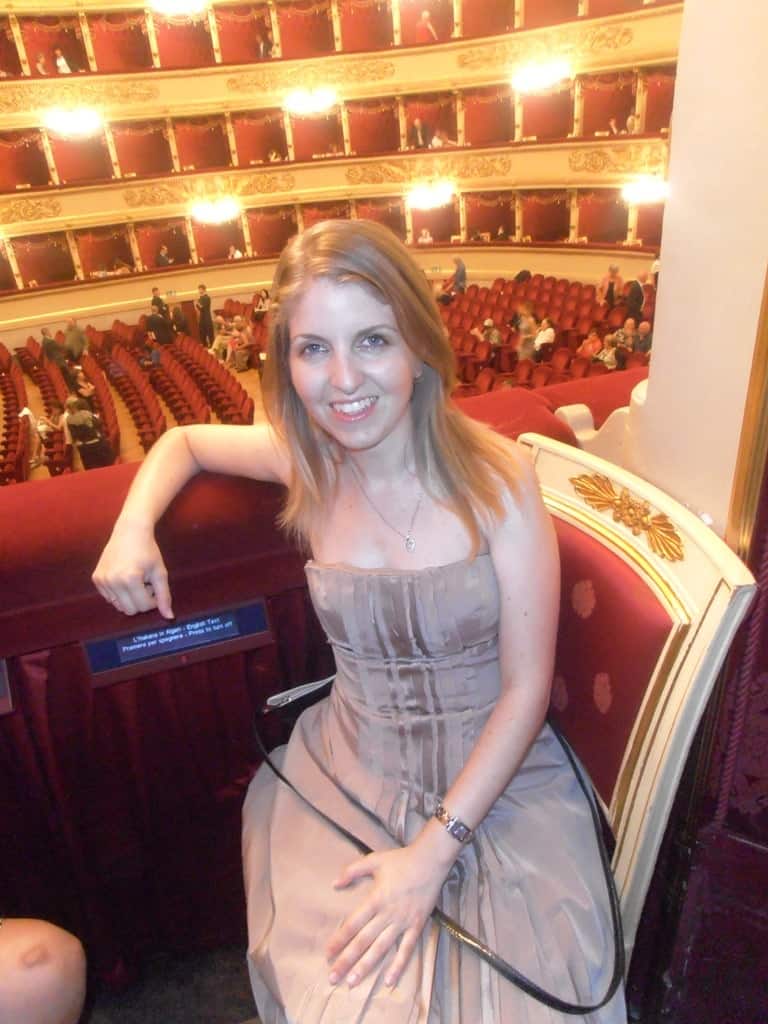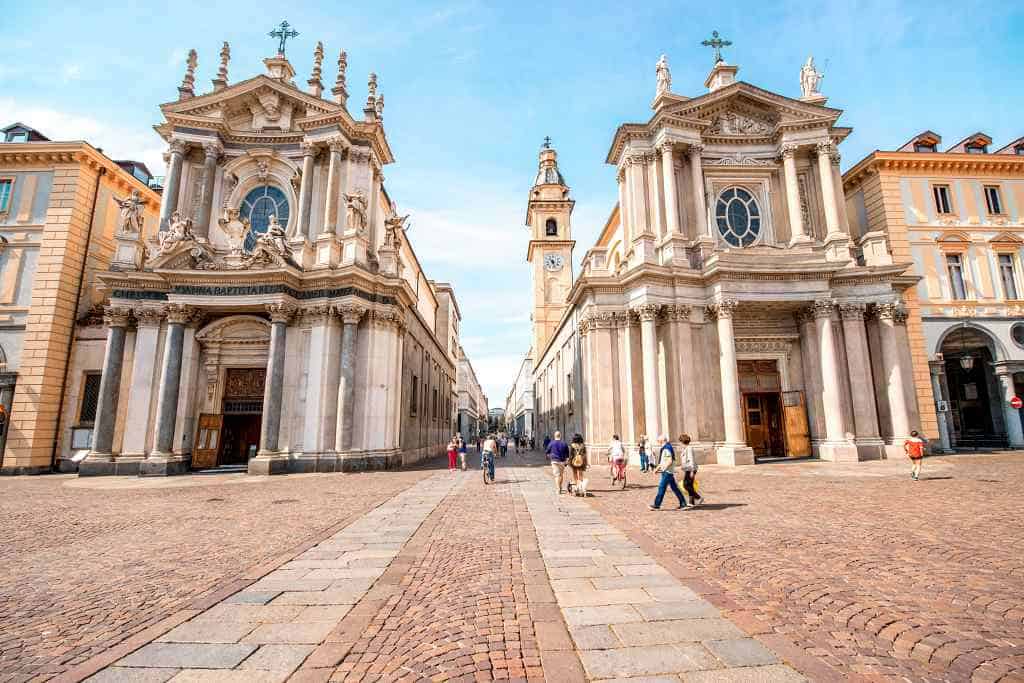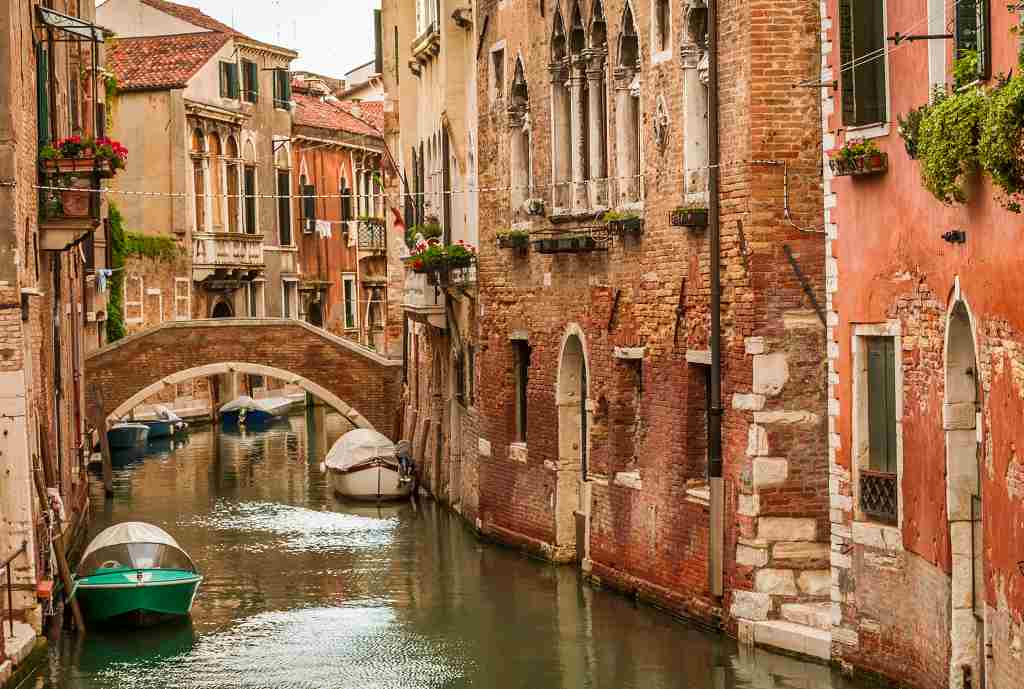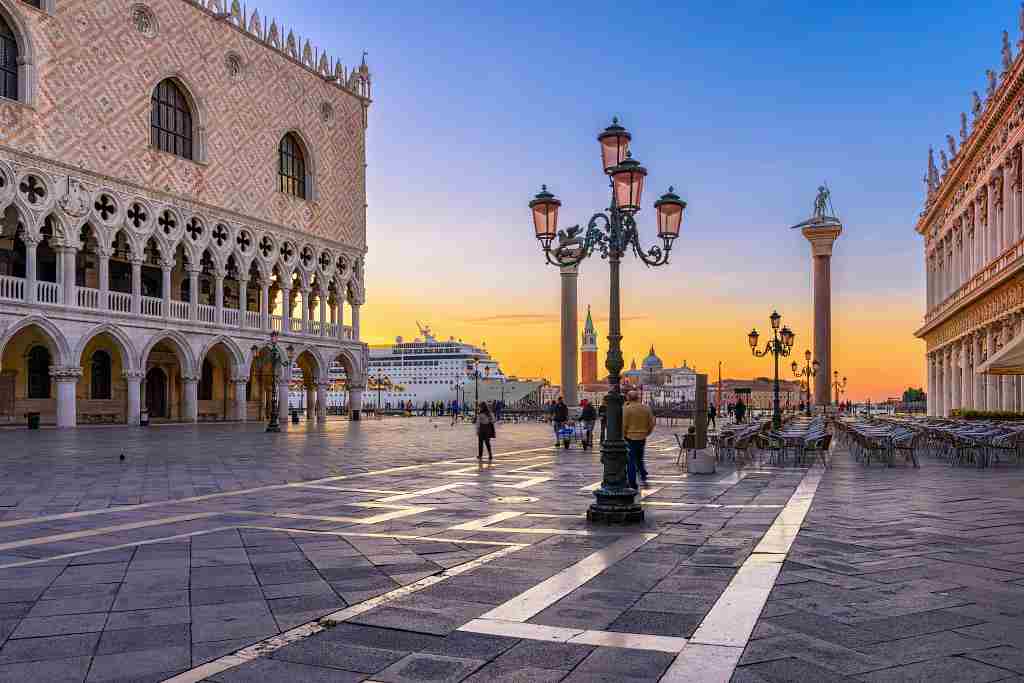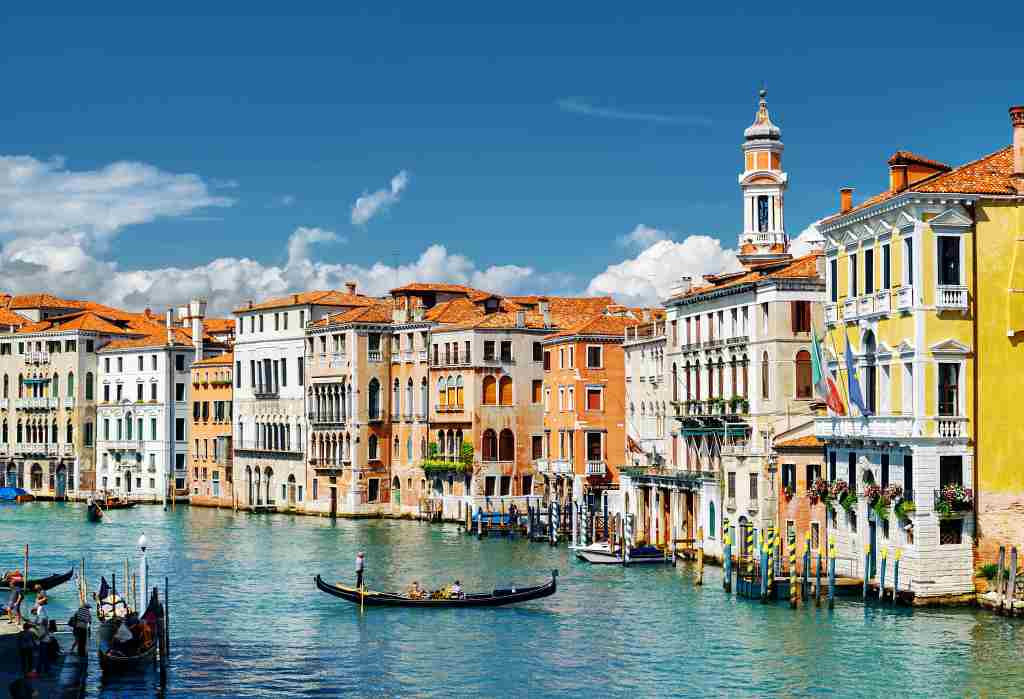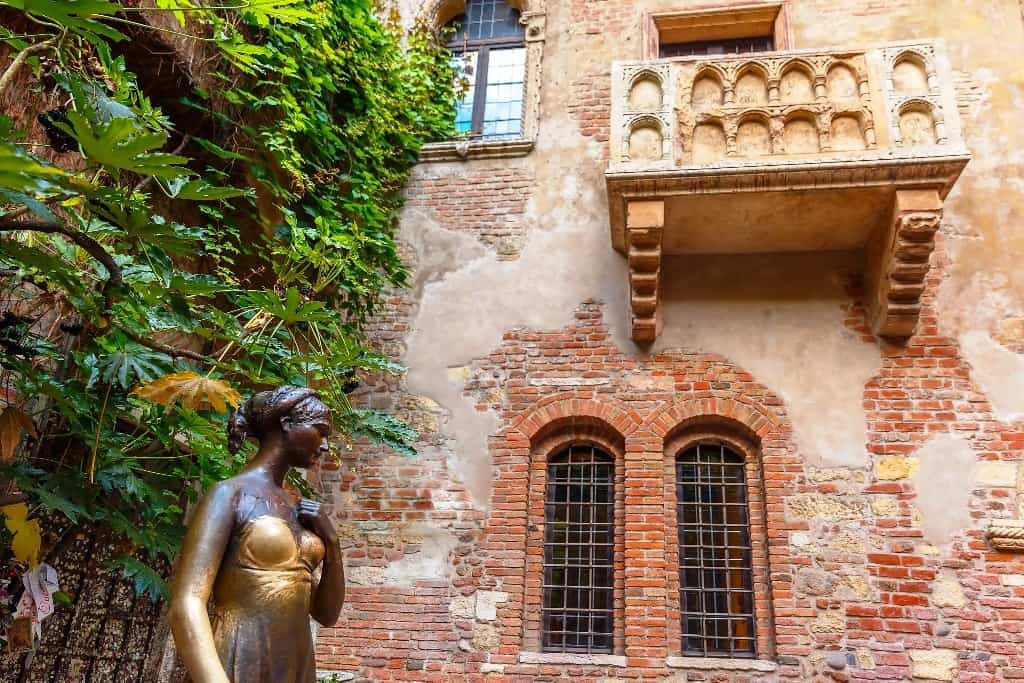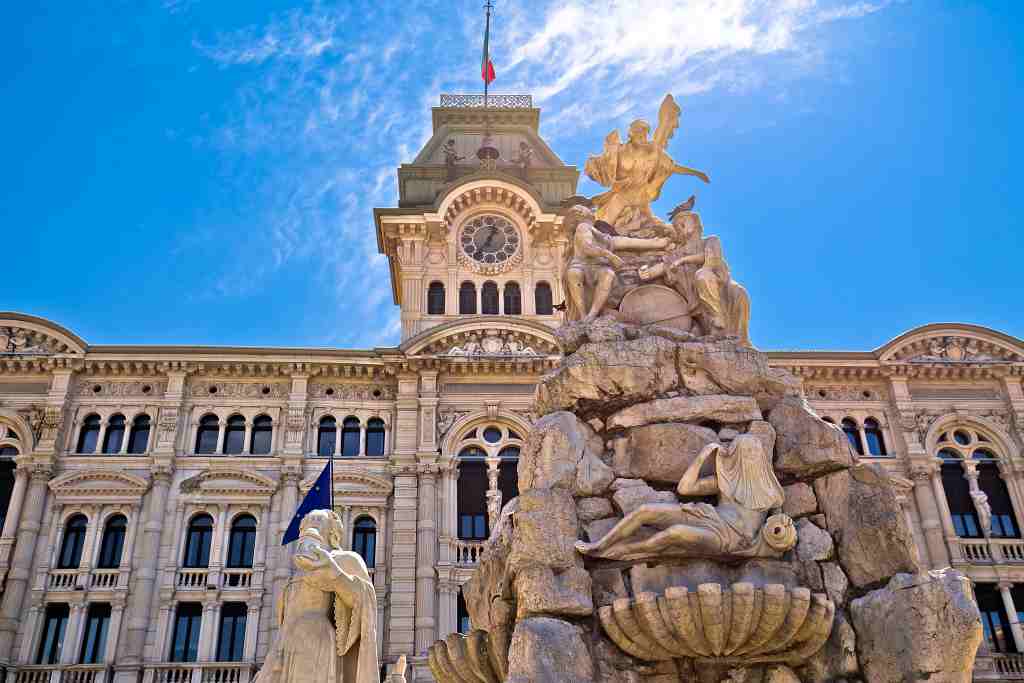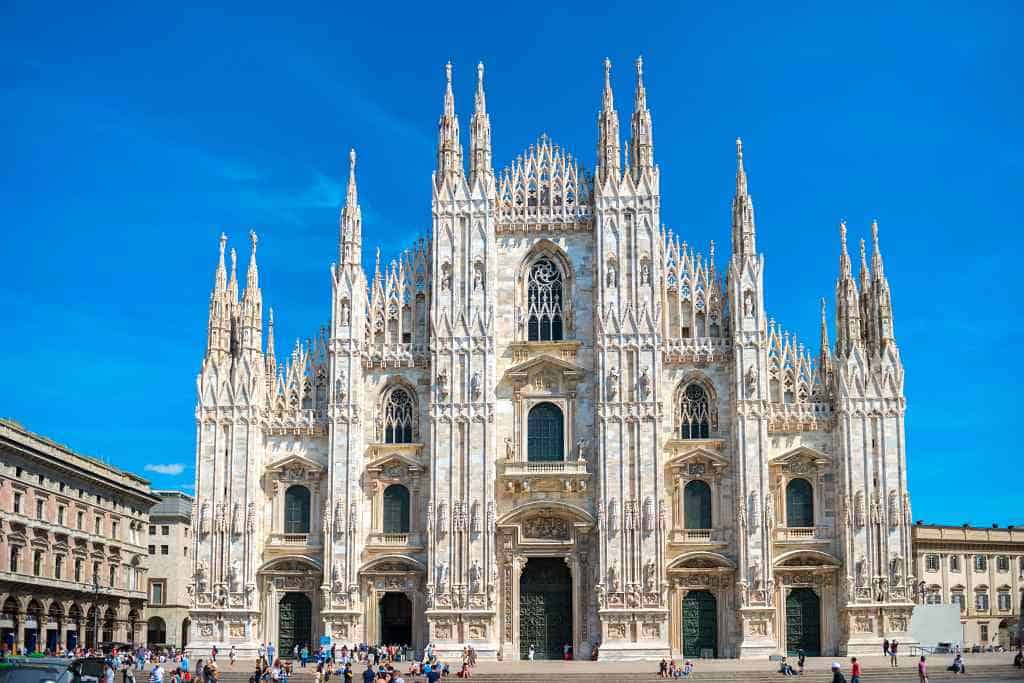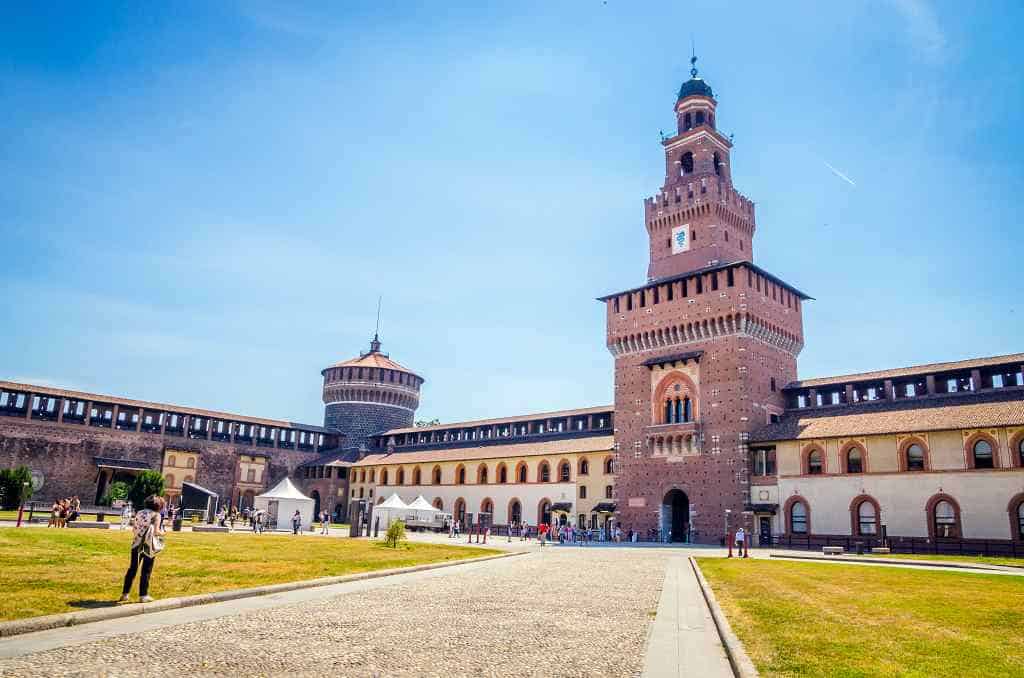Northern Italy offers an incredibly wide selection of tourist destinations: beautiful cities of art, mountains, seaside resorts, lakes, and many amazing natural landscapes.
This part of the Country is commonly associated with mountain tourism, thanks to Valle D’Aosta, Trentino Alto Adige and Piemonte Regions that are well-known for their ski resorts and their trekking trails.
But there’s much more to explore here! The main cities of art are Milan, Turin, Venice, Verona, Trieste, and Bologna, but there are also plenty of smaller towns that are equally picturesque and full of ancient monuments and historic heritage.
Let’s discover 4 ways of spending a week in Northern Italy!
Disclaimer: This post contains affiliate links. This means that should you click on certain links, and then subsequently purchase a product, I will receive a small commission.
Table of Contents
4 Northern Italy itineraries – How to spend a week in Northern Italy
Northern Italy Itinerary n°1: Milan, Como Lake, Venice, and Verona
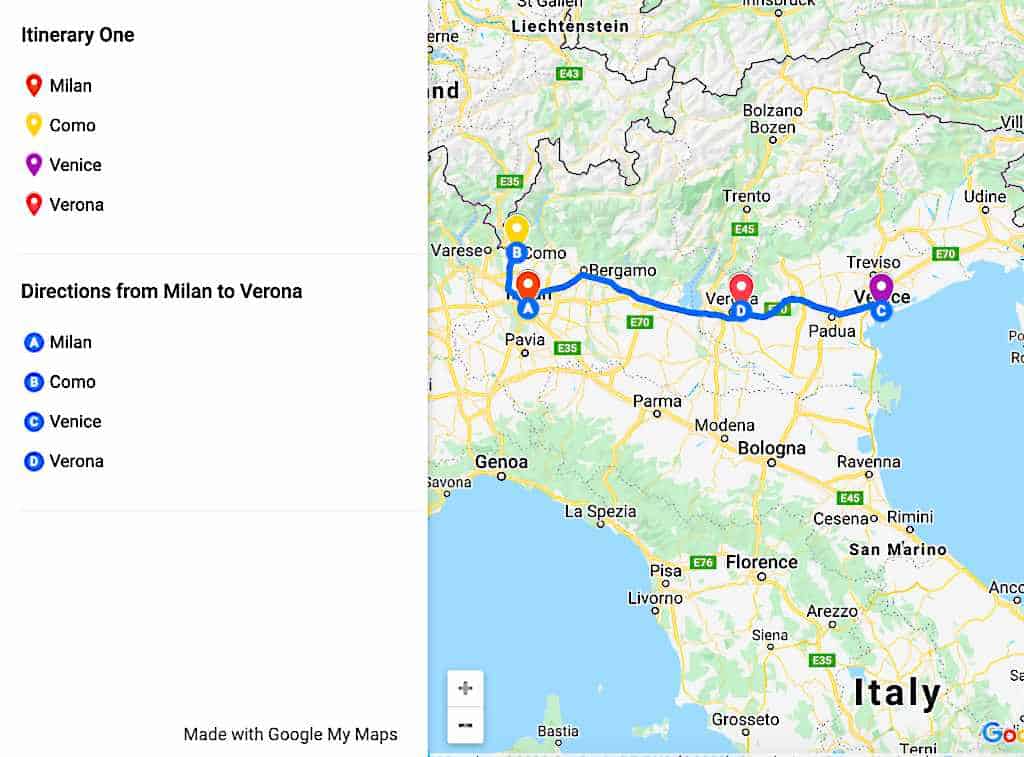
Why? To discover the most elegant and upper-class side of Italy.
Alternative: skip Veneto and head to Liguria to enjoy the glamorous Portofino.
Best time to go: June, to enjoy the beginning of summer on the lake before the crowds of tourists arrive.
Day 1 – Milan
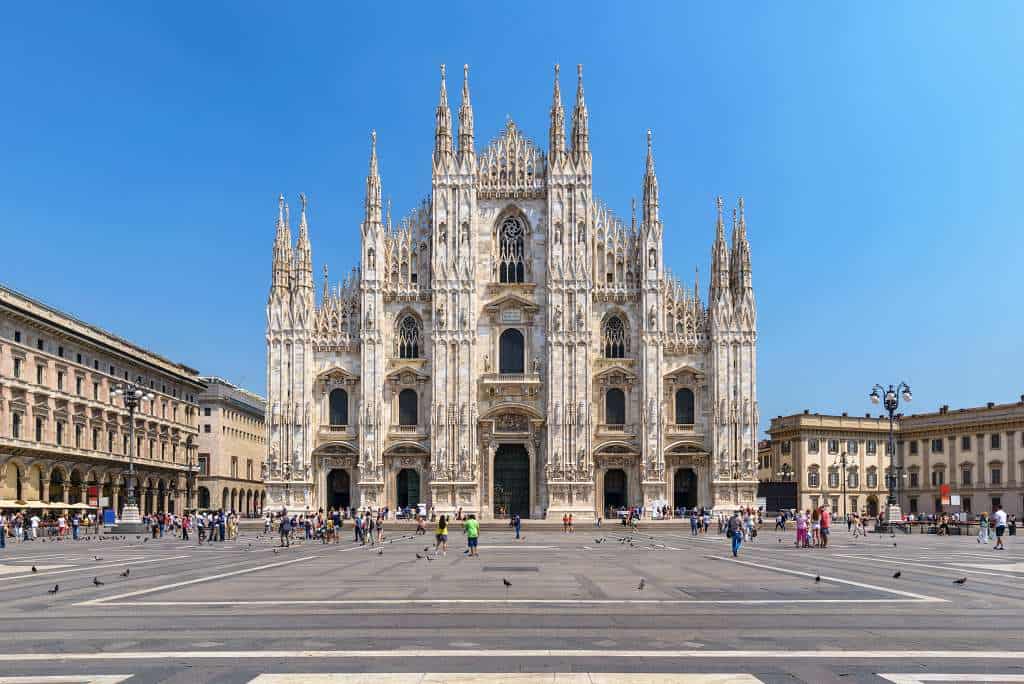
International visitors usually start their Northern trip in Milan, thanks to its many connections with every European city. Stay in the city center, to be closer to the main attractions. Start your visit from Piazza del Duomo, that is the heart of Milan. You cannot miss a thorough visit to the Cathedral and a climb to its terrace to enjoy the view – check this skip the line tour of the duomo and terraces here.
Have a nice walk through the city center and go shopping in one of the main Italian shopping districts. Don’t miss the Vittorio Emanuele II Gallery, full of fancy shops and restaurants.
To end your first day like a local, enjoy an “aperitivo” (happy hour) in one of the glamorous bars nearby.
Day 2 – Milan
Start your day with a tour of one of the most important theaters in the world: La Scala.
After that, you cannot miss one of the masterpieces of Leonardo da Vinci: The Last Supper. You can admire it in the Cenacolo Vinciano, which is the dining room of Santa Maria delle Grazie convent – Book here your skip the line guided tour for the Last Supper.
Spend the whole afternoon visiting the Sforza Castle (to admire its works of art in detail it’s best to take a guided tour like this one, then relax in Sempione Park.
Suggested post: One day in Milan.
Day 3 – Como
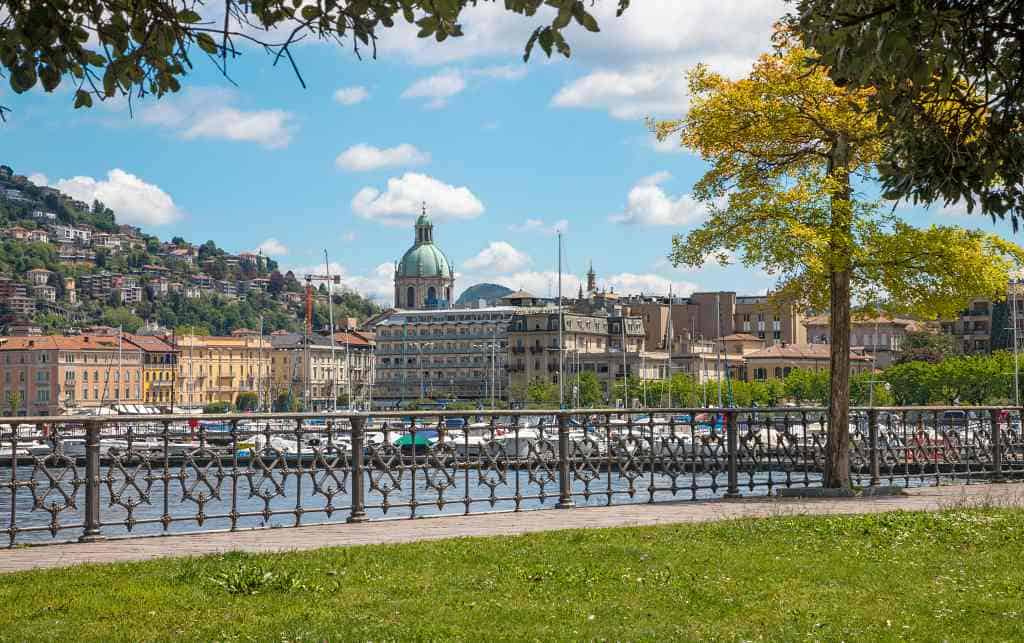
Early in the morning, catch a train to Como. You’ll get there in about 1 hour. Have a pleasant walk along the waterfront to admire the famous lake and reach the Temple of Volta: it is a museum dedicated to Alessandro Volta, the famous scientist that invented the first electric generator and the battery.
Visit also Santa Maria Assunta Cathedral with its precious tapestries and the Basilica of San Fedele in Romanic style.
Have a walk through the picturesque Old Town enclosed by medieval walls then choose a typical “trattoria” to taste local specialties.
Day 4 – Como Lake
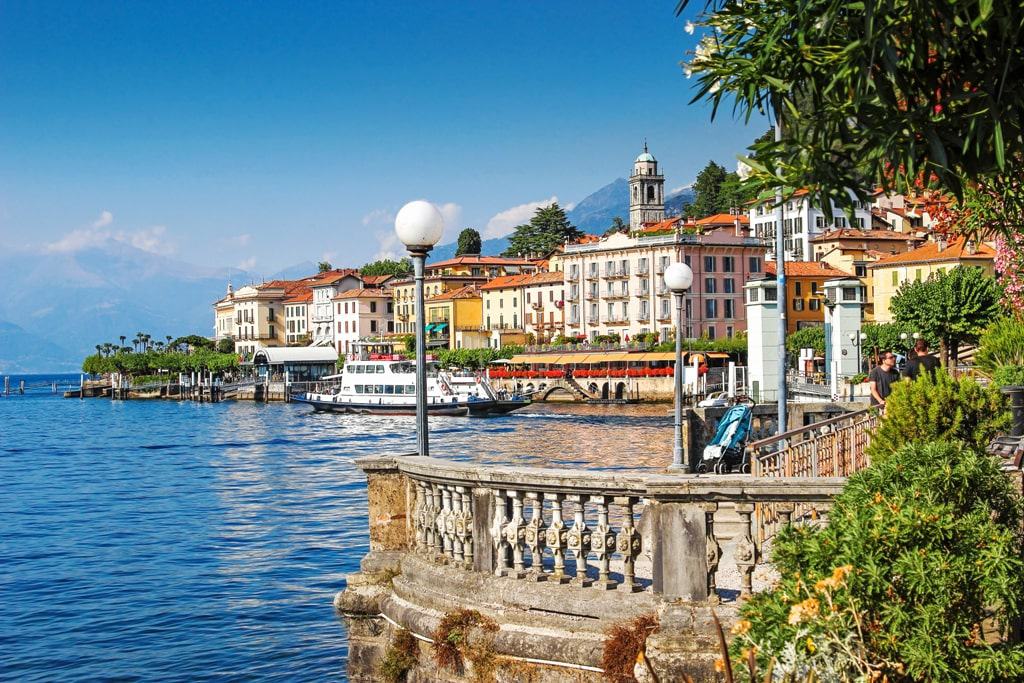
Option 1:
Spend your day on a cruise to discover the coast from an unusual perspective – book your sailing boat experience here.
Option 2:
Rent a car in Como and drive along the lake stopping at your favorite spots. A few suggestions:
–Cernobbio for its picturesque Old Town
–Bellagio for its glamorous atmosphere
–Lezzeno for its cliffs
For more information check: The best towns to visit in Lake Como.
Day 5 – Venice
The trip will take you the whole morning because you shall go back to Milan and catch a high-speed train to Venice. Staying in the city center is really expensive so that you can choose the Dorsoduro district: a more affordable but semi-central area that is famous for its art galleries.
One of the first things you shall do is catching a Vaporetto (local steamboat) and have a tour of the Canal Grande. To enjoy an authentic Venetian experience, you can choose a gondola ride, but it’s really expensive! A good idea is to share the gondola with others – for more information check here.
Day 6 – Verona
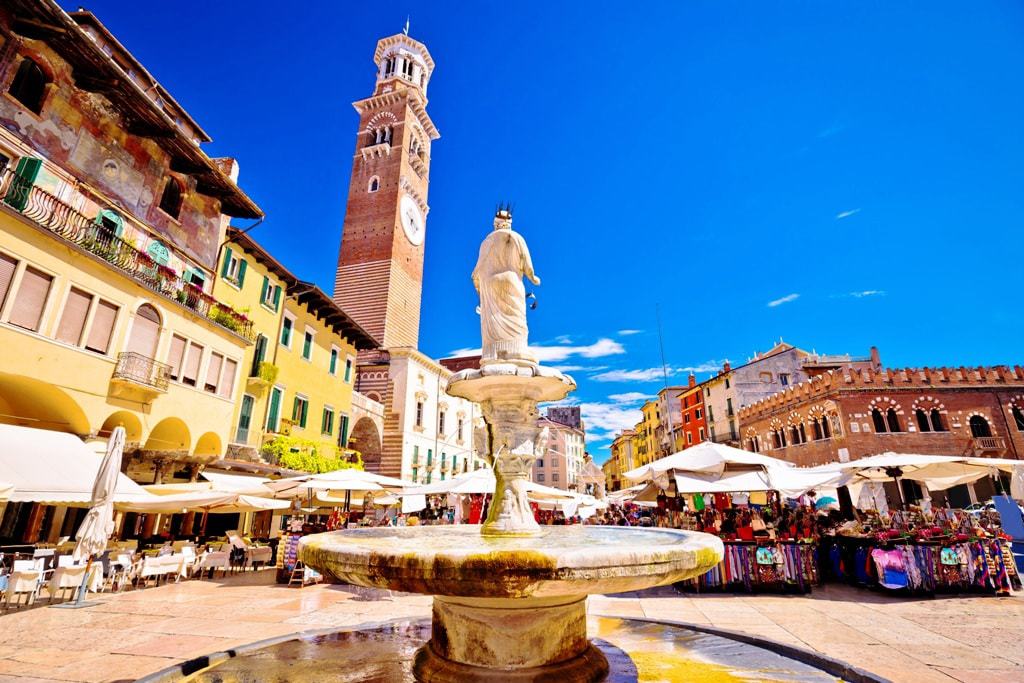
Early in the morning, catch a train to go to Verona. It will only take you about 1 hour. The first thing you shall see is the famous Arena, which is a huge Roman amphitheater located right in the main square of the city called Piazza Bra.
Just a few steps away you’ll see Gran Guardia Palace and Barbieri Palace, that is now the headquarter of the local government.
Another beautiful square you shall not miss is Piazza delle Erbe: climb to the top of the medieval Lamberti Tower to enjoy a beautiful view of the city.
Another unmissable stop is Juliet’s House, a gothic mansion that is said to have been the real house of Shakespeare’s Juliet.
If you still have some time, head to the Arche Scaligere, which is a funerary monument in gothic style which was dedicated to the Scaligeri Family, who ruled the city in the XIII and XIV centuries.
To get a general overview of the city a walking tour is what you need – check this 3 -hour Verona walking tour.
Day 7 – Venice
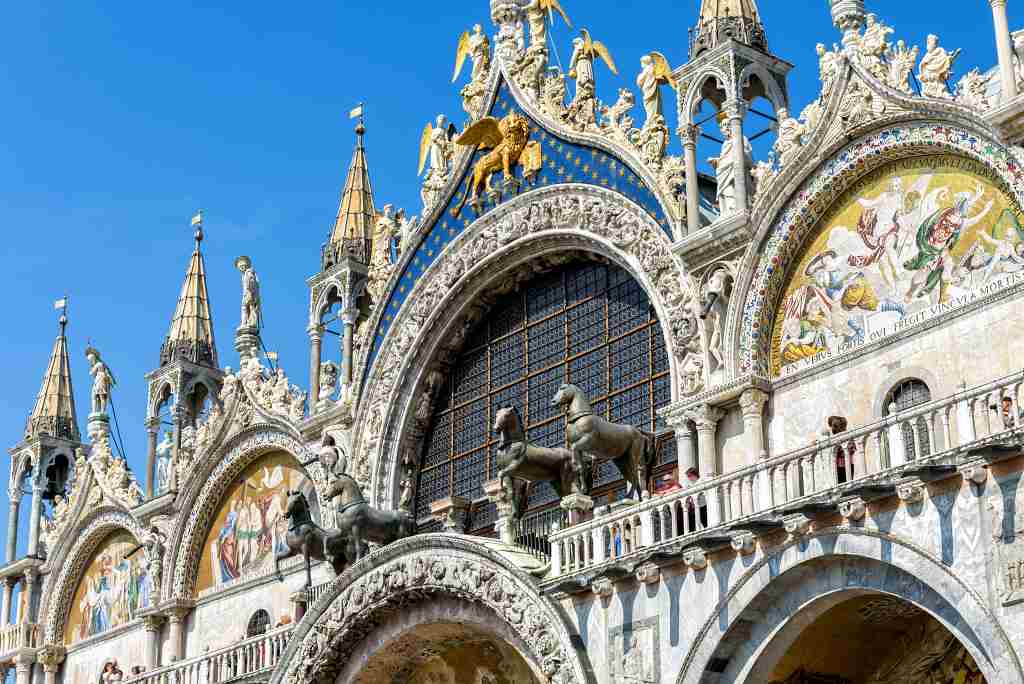
Start from Piazza San Marco and visit the San Marco Basilica: take your time to admire its many works of art and to climb to its terrace to enjoy the view of the entire square from above – Check this Doge’s Palace & St. Mark’s Basilica with Terrace Access Tour for more information.
Visit also Palazzo Ducale: it was the former residence of the “Doge”, who was the ancient governor of the city.
Walk through the picturesque city center to reach the famous Rialto Bridge and take some pictures before starting your return trip.
You might also like: How to spend 2 days in Venice.
Northern Italy Itinerary n° 2: Milan, Como Lake, Maggiore Lake, and Turin
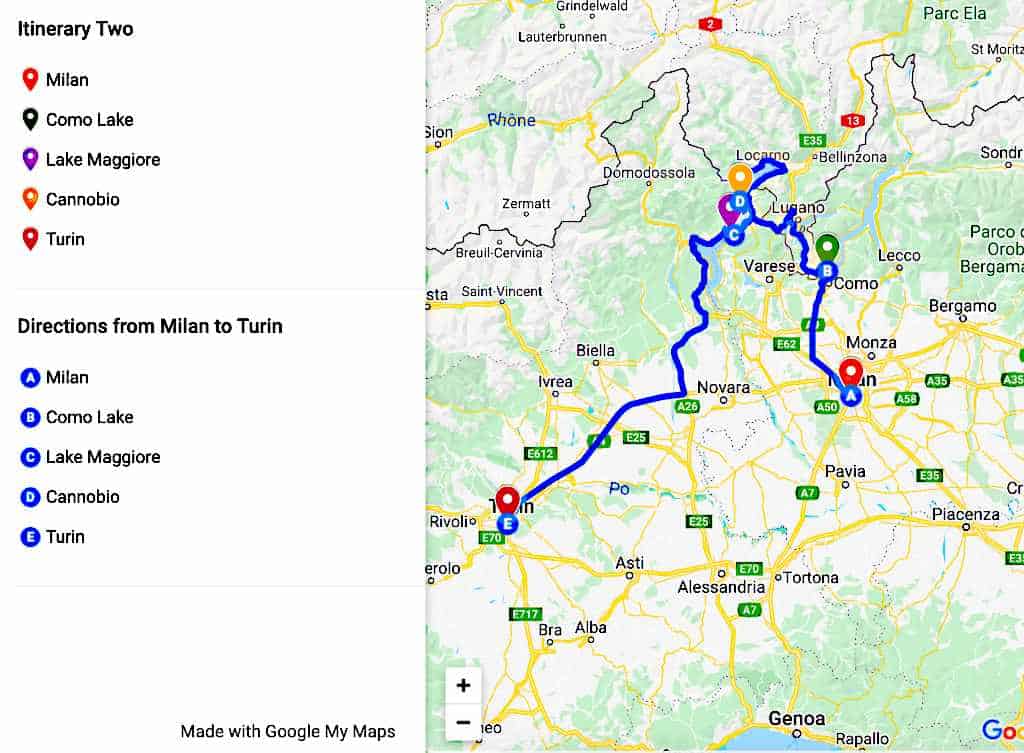
Why? To spend a quiet week, far away from the tourist crowds. Northern Italy lakes are the best destination to relax and enjoy a beautiful natural landscape together with some picturesque small towns. Once you left behind the busy atmosphere of Milan, you’ll be immersed in peaceful surroundings, even in Turin, which despite being a large city, has kept a more discreet appeal.
Alternative: choose between Milan and Turin and spend the rest of your days between the lakes and the mountains of the Valle D’Aosta Region.
Best time to go: late spring and early summer to fully enjoy the best of the lakes.
Day 1 – Milan
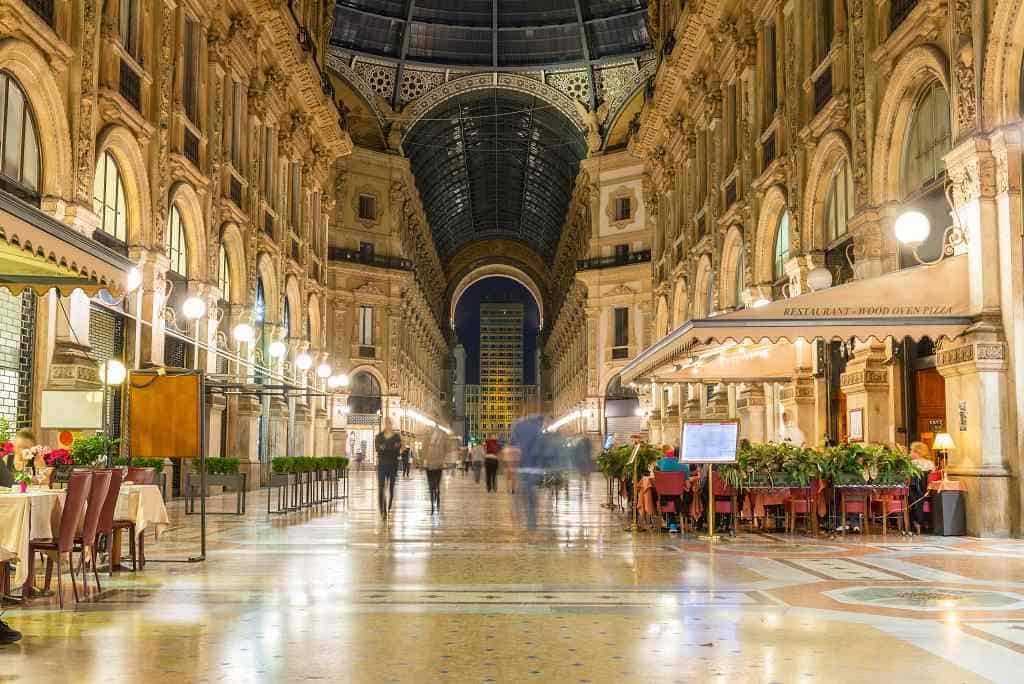
Start your visit from Piazza del Duomo, that is the heart of Milan. You cannot miss a thorough visit to the Cathedral and a climb to its terrace to enjoy the view – check this Fast-Track Milan Cathedral and Terraces Guided Tour.
Visit also the Museum of the Treasure to learn more about the construction works of this iconic landmark.
Have a pleasant walk through the glamorous city center and don’t miss the fancy shops and the refined decorations of the Vittorio Emanuele II Gallery.
Spend your evening in the Brera district: it’s a cultural hub full of art and with a nice bohemian atmosphere.
Day 2 – Milan
Start your day with a visit to one of the most important Italian theaters: La Scala. Learn what happens behind the scenes with this guided tour.
From there, it is easy to reach via Montenapoleone, which is the most luxurious and upper-class street in town. If you are a fashion-addict, don’t miss a thematic tour leading you to discover the most popular brands.
Another unmissable stop is the Cenacolo Vinciano, which is the dining room of the Convent of Santa Maria delle Grazie hosting “The Last Supper” by Leonardo da Vinci.
After a long day, relax in the natural scenery of Sempione park.
Day 3 – Como Lake
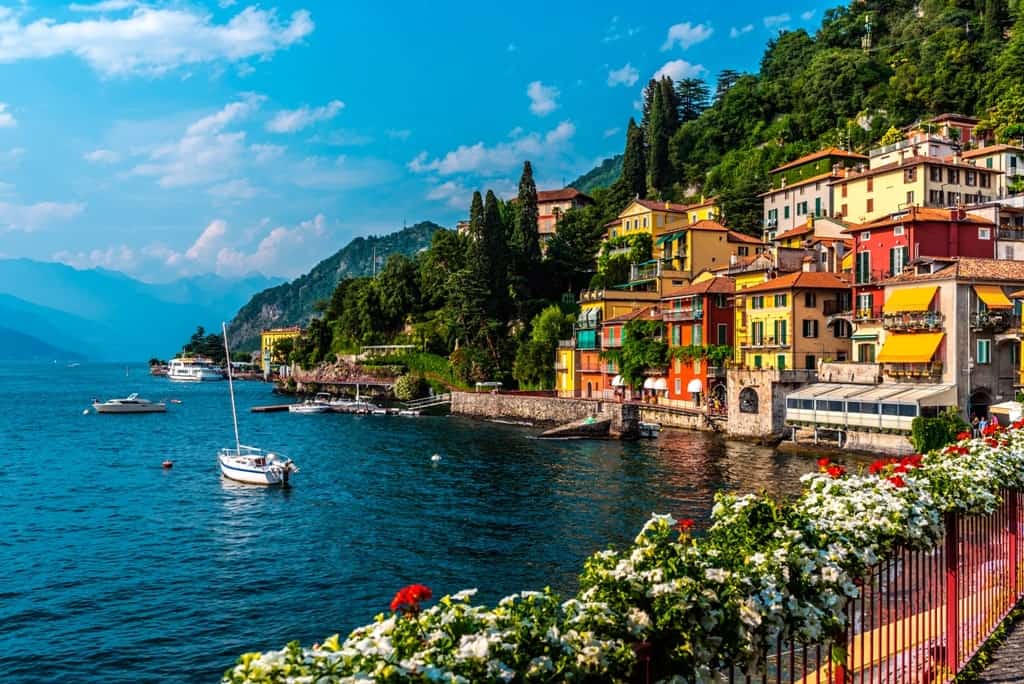
A day trip to admire this famous lake is an unmissable stop of your journey in Northern Italy!
Option 1: catch a train from Milan and reach Como in about 1 hour. What to see:
–Santa Maria Assunta Cathedral for its precious tapestries
–Church of S. Abbondio for its peculiar Romanic style
–Broletto Palace, that was the medieval town hall now used for some interesting art exhibitions
–Temple of Volta, that is a museum dedicated to the scientist, Alessandro Volta
–Waterfront to admire the lake and the natural landscape
Option 2: rent a car in Milan and drive to Bellagio, one of the most beautiful villages of the coast, which is reachable with a 1h40 drive. What to see:
–Villa Serbelloni with its panoramic garden
–Villa Melzi with its botanical gardens
–San Giacomo Basilica in the Borgo area
Option 3: take a guided tour leading you to discover several locations in just one day. This one will take you to Como, Bellagio and to Varenna.
Day 4 – Stresa (Maggiore Lake)
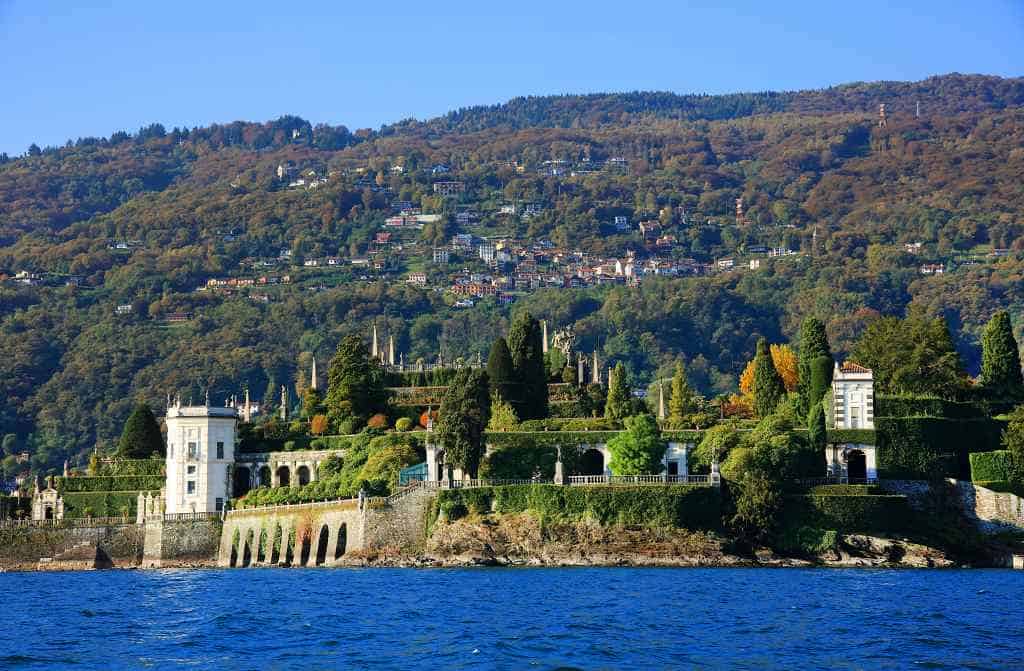
Reaching Stresa from Milan will only take you 1 hour by train. It is one of the best tourist destinations of Maggiore Lake and its fame is largely due to the 3 Borromean Islands located just in front of its shores. Start your day with a visit to Villa Pallavicino and its beautiful park.
Spend the rest of your day visiting the islands: Isola Bella (Beautiful Island), Isola dei Pescatori (Fishermen’s Island) and Isola Madre (Mother Island). The best way to visit them all in just a few hours is by taking a hop-on hop-off boat with an all-inclusive ticket.
Day 5 – Cannobio (Maggiore Lake)
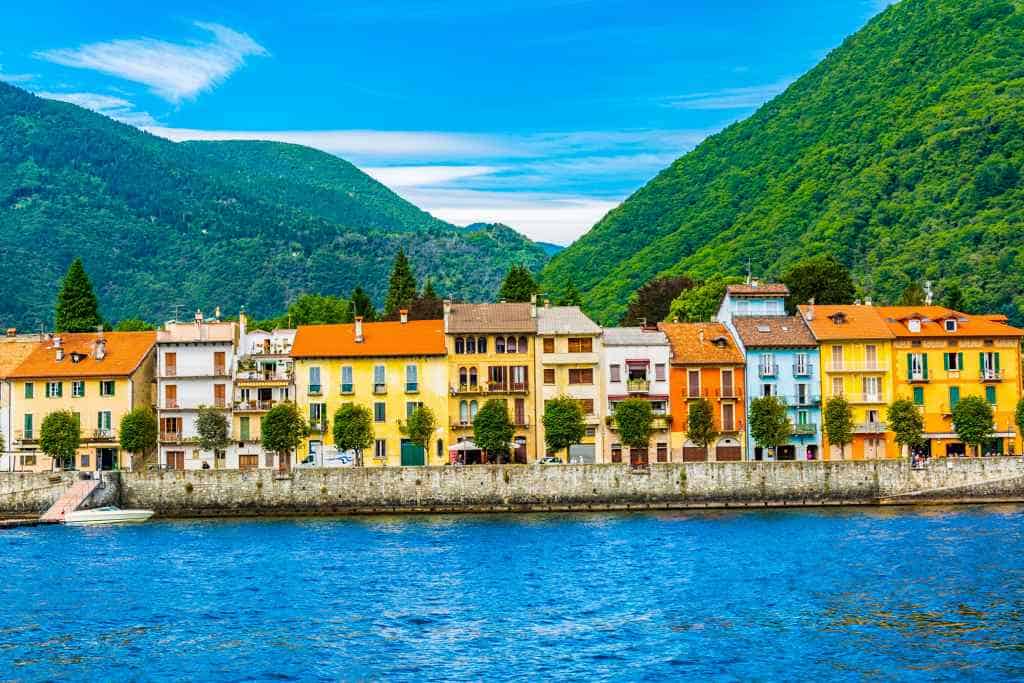
Rent a car to reach Cannobio (approx. 50 minutes’ drive). This nice village close to the Swiss border is another popular destination of the Maggiore Lake area. Reach the Gorge of St. Anne overlooking the Cannobino Creek and surrounded by lush vegetation.
In Cannobio there are also some nice churches like the Sanctuary of the SS. Pity (hosting a rib of Jesus) and the Collegiata di San Vittore Martire (built in Neoclassical style).
You can also rent a bike and try the local cycle track starting from the waterfront and reaching the woodland.
Day 6 – Turin
Early in the morning, catch a train from Stresa to reach Rho. Here you’ll catch another train to reach Turin. The whole journey will take you approx. 3 hours. Choose an accommodation in the city center to be able to walk your way through the main points of interest. Start exploring the main squares to get a general impression of the city: Piazza San Carlo (called “the living room of Turin”), Piazza Castello (with the Royal Palace, Palazzo Madama, and the Royal Theater), Piazza Carignano (a pedestrian Baroque square) and Piazza Vittorio (overlooking the Po River).
Spend your evening taking a popular guided tour, loved by both locals and tourists: it is called “Magic Turin” and it shows some mystic and mysterious spots and legends linked to the history of the city – check here for more info.
Day 7 – Turin
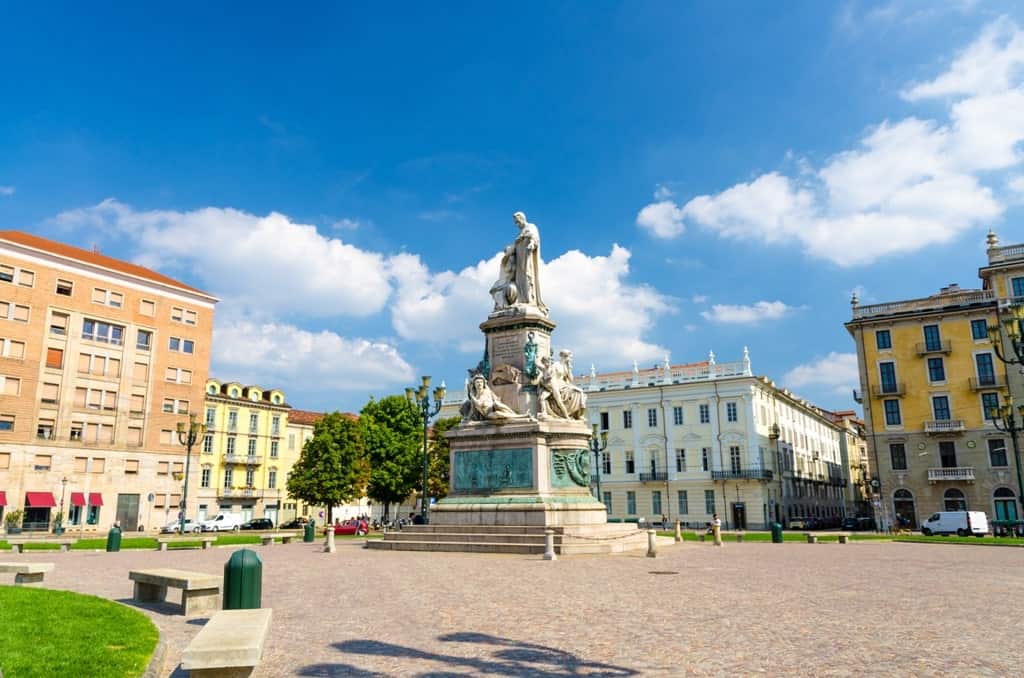
You cannot visit Turin without going to the Egyptian Museum, which is the biggest and most important Egyptian museum in the world, after the one located in Cairo. To fully enjoy your visit, take a guided tour like this one.
Cross Vittorio Emanuele II Bridge and reach the beautiful Gran Madre (Great Mother of God’s Church): it was built in 1814 in Neoclassical style to celebrate the return of the King after Napoleon’s defeat.
If you still have some time before starting your return trip, climb to the Monte dei Cappuccini: a steep climb upon one of the city hills will lead you to a nice church belonging to the Capuchins Friars and offering an amazing belvedere.
Northern Italy Itinerary n°3: Venice, Verona, Treviso, and Trieste
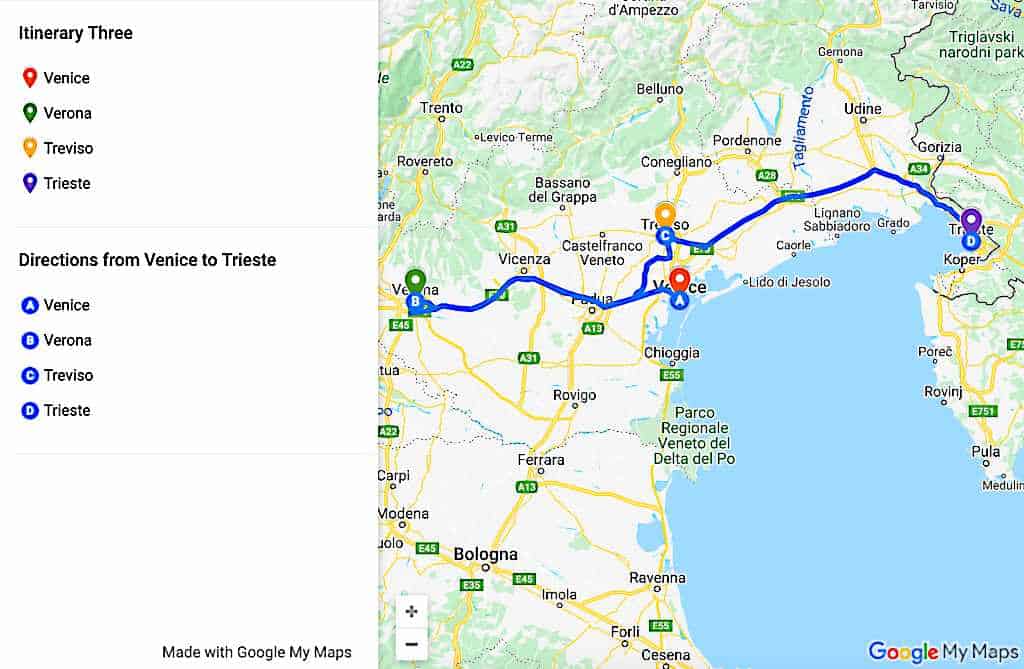
Why? For art and architecture lovers. These cities of art will let you discover the best of Veneto Region, with a glimpse of another Northern Region, which is often unfairly underrated: Friuli Venezia Giulia.
Alternative: after visiting Venice and Verona you can also head to Bologna to explore Emilia Romagna Region.
Best time to go: early Autumn to enjoy the seasonal atmosphere of the Northern Adriatic Sea.
Day 1 – Venice
The first thing you’ll see upon your arrival is one of the 4 bridges crossing the Canal Grande: Calatrava Bridge. Not too far from it, you’ll also see the Scalzi Bridge. The other bridges are Rialto Bridge and Accademia Bridge, that you can reach with a pleasant walk along the Canal taking you approx. 1h.
Spend your afternoon in Castello district: here you can see the Arsenale, that is an ancient shipyard, and visit the Historic Naval Museum that will show you the evolution of Italian maritime history.
To relax after a long day, have a walk in the beautiful Pinewood of St. Helen to enjoy the view of the lagoon.
Day 2 – Venice
Start your day in Piazza San Marco and visit San Marco Basilica, the Tower, the Clock Tower, and Palazzo Ducale. To speed up your visit, choose a guided tour like this one.
Spend your lunch break in Campo della Pescaria, that is the local market: here you’ll find the local fish market (taking place every day until noon) and a larger market with fresh and local food.
In the afternoon, visit the 3 islands of Murano, Burano, and Torcello: they are easily reachable by boat and they are especially famous for their glass processing laboratories.
Choose a wine tasting tour for your second evening in Venice: Veneto Region is famous for its wines and vineyards and you’ll have the chance to also taste some local appetizers called “Cicchetti”.
Day 3 – Venice
Stay in San Marco district to continue the tour of the most central part of the city. Start with a guided tour of the famous La Fenice Theater.
After that, head to Palazzo Grassi and visit one of its prestigious contemporary art exhibitions.
Another impressive monument you cannot miss is Palazzo Contarini del Bovolo, a gothic mansion famous for its impressive external spiral staircase.
If you love art, there’s another museum you shall visit: the Peggy Guggenheim Collection dedicated to European and American modern art.
At the end of your stay in Venice, there is one last thing to try: a gondola ride.
Day 4 – Verona
Early in the morning, you can catch a train to go to Verona. The journey will take you about 1 hour. The first thing you shall see is the famous Arena, which is a huge Roman amphitheater located right in the main square of the city called Piazza Bra. A good idea is taking this 1 hour skip the line guided tour.
Head to Castelvecchio Museum to admire some medieval works of art and an ancient weapon exhibition.
Another unmissable stop is Juliet’s House, a gothic mansion that is said to have been the real house of Shakespeare’s Juliet.
Did you know that Verona also has the “original” Romeo’s House too? The real Montecchi house is located not too far from Juliet’s House, close to the Arche Scaligere (a funerary monument in gothic style which was dedicated to the Scaligeri Family who ruled the city in the XIII and XIV centuries).
Your visit can end in Piazza delle Erbe with an “aperitivo” at an outdoor table and the climb to the top of Lamberti Tower to enjoy the view of the city.
You also like: Things to do in Verona.
Day 5 – Treviso
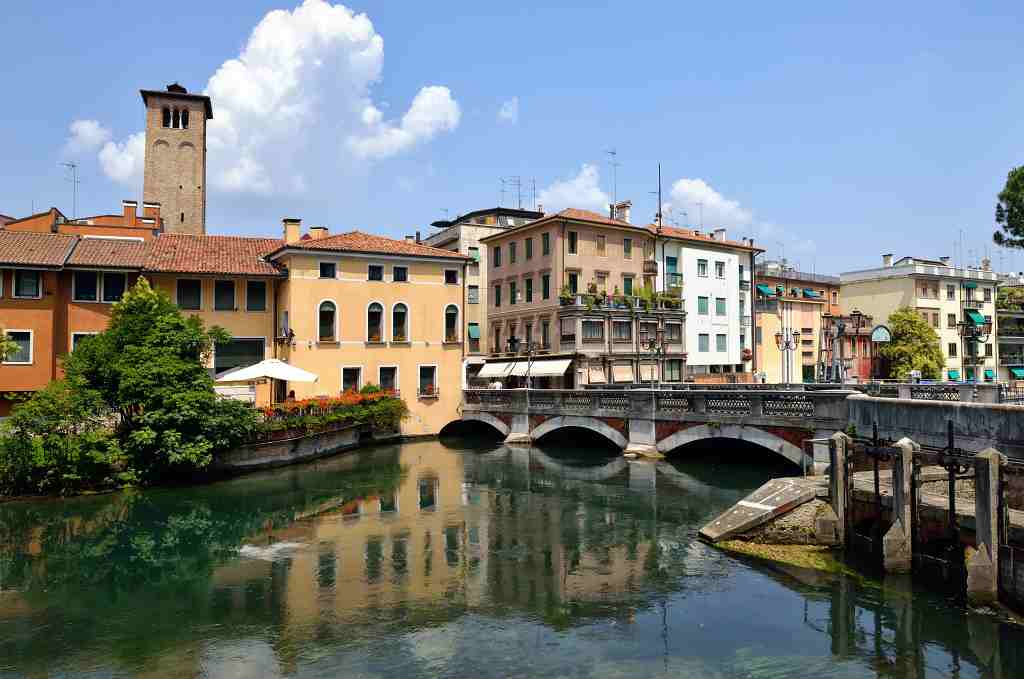
Another interesting day trip from Venice is Treviso. The journey is really fast: about 30 minutes by train! The heart of the city is Piazza dei Signori, which is surrounded by many historical buildings like Palazzo della Prefettura and Palazzo della Ragione.
Just a few steps away, you’ll find yourselves in Pescheria Island, the local fish market: it is located on a small river island and it is one of the main tourist attractions of the town.
As you can see, Treviso is rich in water: its streets are crossed by the Sila River and the Botteniga River, which is divided in many smaller canals called “cagnani”. A simple stroll along the canals will let you enjoy many picturesque corners and views.
Don’t miss a visit to St. Peter Cathedral, with its paintings by Tiziano and Pordenone and the gothic church of S. Nicolò, which is larger than the cathedral itself.
Day 6 – Trieste
The journey from Venice takes about 2 hours by train. Start your visit from the main square called Piazza Unità d’Italia: this square changed its name in 1918 when Trieste was reunited with the rest of Italy after World War I. Before, its name was Piazza Francesco Giuseppe, in honor of the Austrian Emperor who ruled Friuli Region.
Head to San Giusto Castle located on top of a hill: here you can visit the City Museum and its ancient weapons collection. Close to the Castle, you’ll find the Cathedral of San Giusto, overlooking the city.
After a typical dinner, have a walk along the shore and discover the local “topolini” (“mice”): several terraces overlooking the sea where people sunbathe during the day and gather during the night.
Day 7 – Trieste
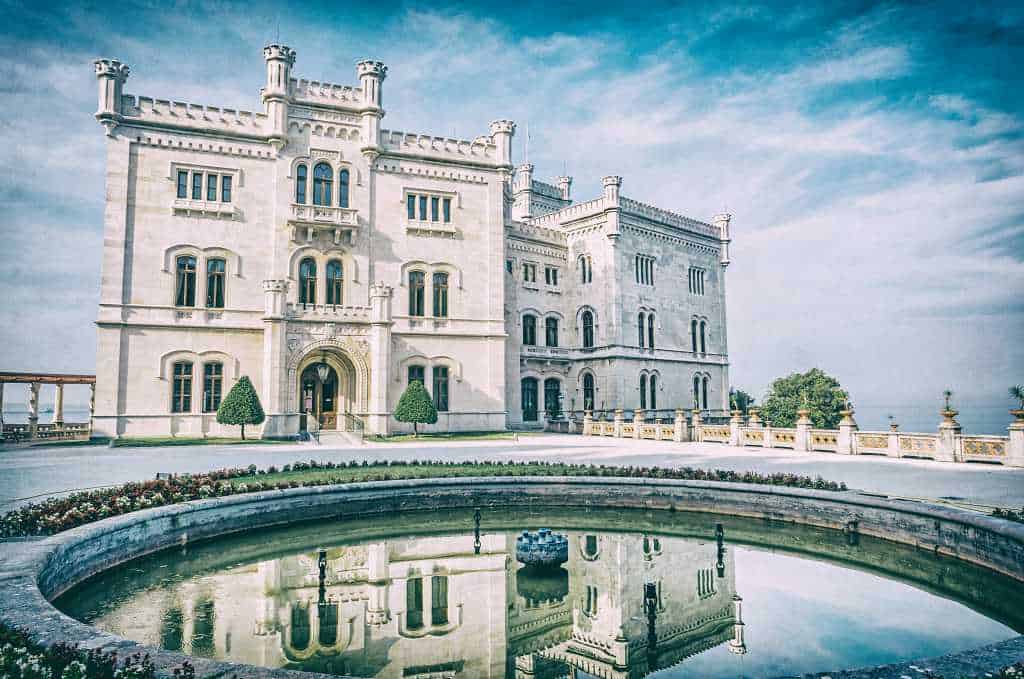
Spend at least half a day visiting the Miramare Castle, which was the summer residence of the Austrian Imperial Family. If you don’t have much time before your return trip a private driver and a skip-the-line ticket will help.
Northern Italy Itinerary n°4: Milan, Turin and Valle d’Aosta
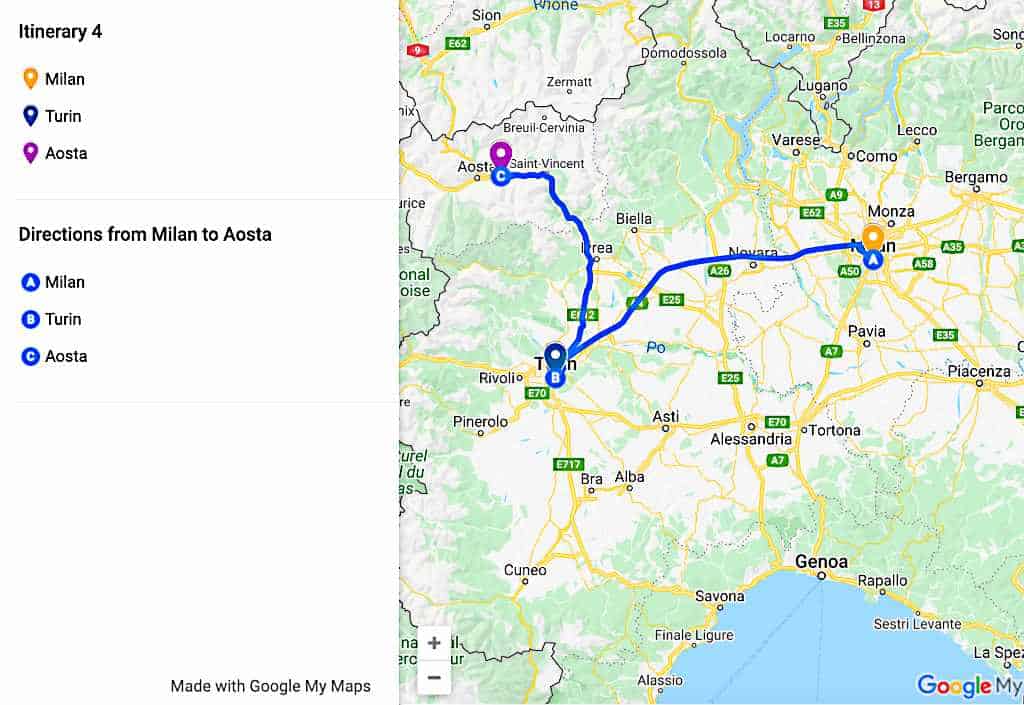
Why? To explore North-Western Italy with its main cities and the best of local mountain landscapes.
Alternative: after visiting Milan and Turin head to Genoa to explore Liguria Region.
Day 1 – Milan
Start your visit from Piazza del Duomo, that is the heart of Milan. You cannot miss a thorough visit to the Cathedral and a climb to its terrace to enjoy the view – check this Fast-Track Milan Cathedral and Terraces Guided Tour.
Have a pleasant walk through the glamorous city center and don’t miss the fancy shops and the refined decorations of the Vittorio Emanuele II Gallery.
Spend your evening in the popular Navigli district, where you can see the best of the local nightlife.
Day 2 – Milan
Start your day with a tour of one of the most important theaters in the world: La Scala.
From there it is easy to reach via Montenapoleone, which is the most luxurious and upper-class street in town.
Make the best out of your lunchbreak with a food tour combined with a tour of the Brera District:
Spend your afternoon visiting the Sforza Castle (a guided tour is the best option because it’s really huge).
For your last night in Milan choose the trendy and modern Isola district.
Day 3 -Turin
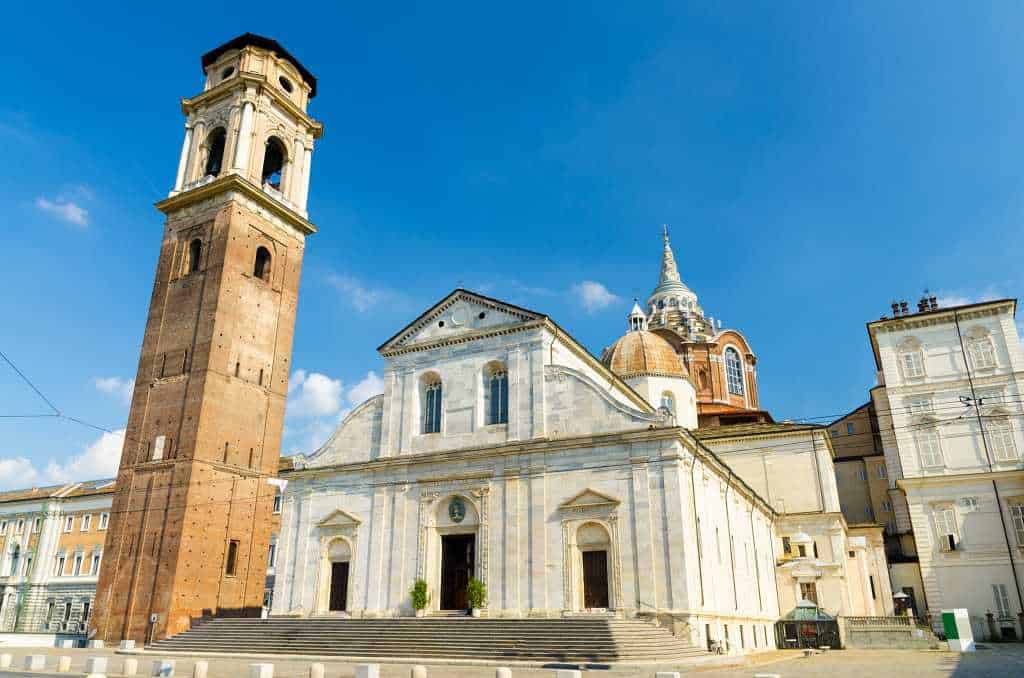
Catch a high-speed train to reach Turin in just 1 hour. If you choose a central accommodation, you’ll have all the main points of interest within walking distance. Start your visit from the symbol of the city: the Mole Antonelliana. It was once the tallest brick building in the world and it takes its name from its architect, Alessandro Antonelli.
Inside you’ll find the famous Cinema Museum, which is really funny to visit thanks to an engaging exhibition itinerary. After your visit, you shall climb to the top of the Mole (with a lift!) to enjoy an amazing view.
Walk along the vibrant Via Po and reach Piazza Vittorio: from there you can enjoy the view of the Po River and the hills on the other side.
Cross the river and visit the Gran Madre (Great Mother of God’s Church): it was built in 1814 in Neoclassical style to celebrate the return of the King after Napoleon’s defeat.
If you want to have an overview of the city in just a few hours, choose this guided tour.
Day 4 -Turin
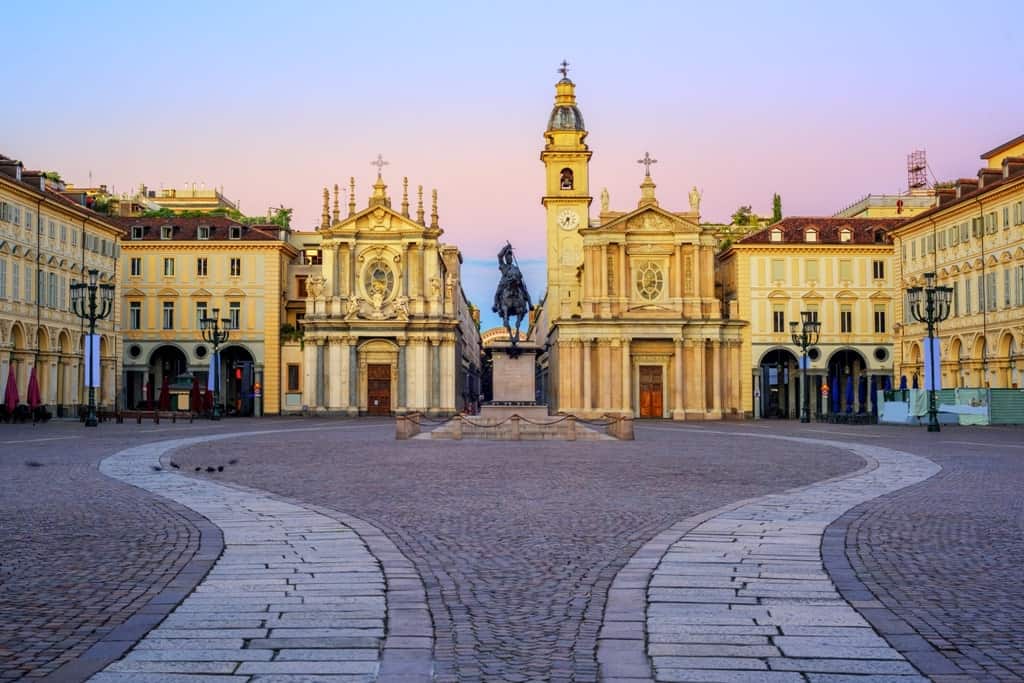
An unmissable stop in Turin is the Egyptian Museum, which is the largest in the world after the one located in Cairo. A guided tour is the best choice.
Head to the Sanctuary of the Consolata: it is built upon a paleo-Christian church and its interiors in Baroque style are definitely worth a visit. Just in front, you’ll see a small historic café: enter and taste a bicerin (“small glass”). It is a traditional hot drink made of coffee, hot chocolate, and milk.
Spend a few hours in the romantic Valentino Park with its green lawns and the beautiful riverbanks.
An original idea for your evening is cooking and having dinner at a local’s house.
Catch a train in Turin and head to Aosta. The journey will take you about 2 hours. You can spend your day wandering through its Roman Old Town. Its most important remains are:
–The Arch of August: it was built by Romans to celebrate the Emperor that defeated the barbarians
–Porta Pretoria: the only ancient gate to the city that has been preserved
–Santa Maria Assunta Cathedral with its Museum of the Treasure
–The Cryptoporticus: an evocative underground building with arcades whose function is still unknown
–The Roman Theater: today it’s in ruin but you can still see it was huge
Like many mountain towns, Aosta has not a great nightlife, so that what you can do is searching for a typical trattoria and spend your evening tasting local specialties.
Day 6 – The Castles
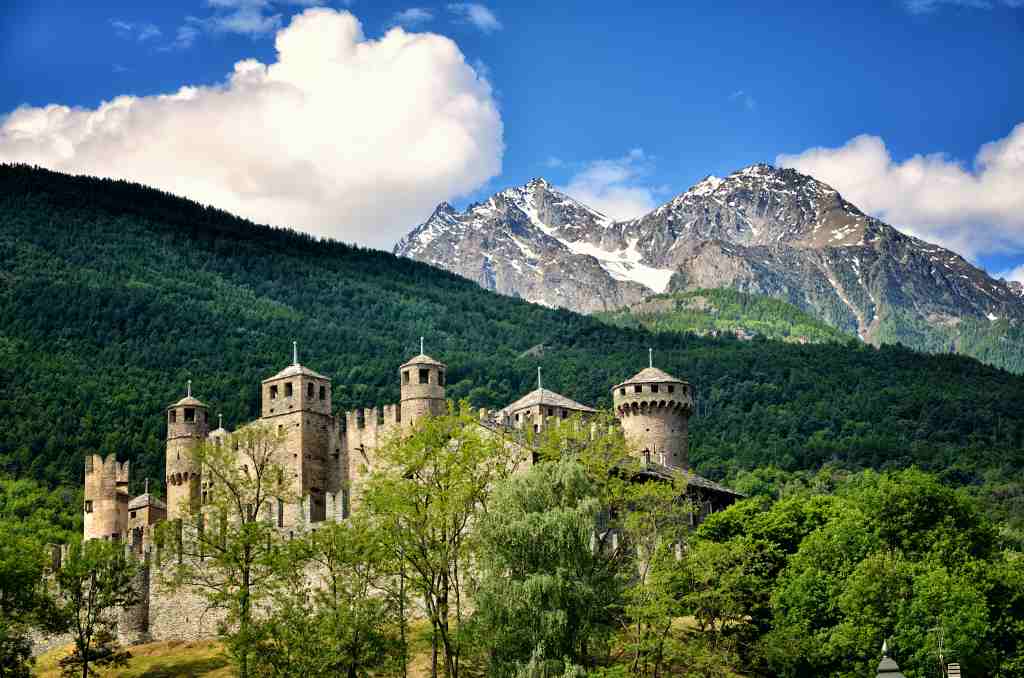
This area was very important in the Middle Ages because it represented the entrance gate to Italy and the only passage to the Alps. For this reason, many castles and fortresses were built here not only to protect the territories but also to levy tolls.
Option 1: take a private tour leading you to the main castles and including some gastronomic tastings too. This tour is perfect for your day trip.
Option 2: rent a car in Aosta and drive around. The unmissable castles are:
–Fenis: it belonged to the noblest local family, the Challant. It is very well preserved and you can still see many decorations and paintings inside
–Issogne: another castle belonging to the Challant Family with a beautiful park
–Verrès: overlooking the homonymous village
–Sarriod de la Tour: it is immersed in one of the most beautiful landscapes of the area
–Savoia: it was built by the Queen Margherita Savoia as her summer residence
–Royal Castle of Sarre: it was the headquarter of the king for his hunting expeditions in the mountains
Day 7 – Cogne
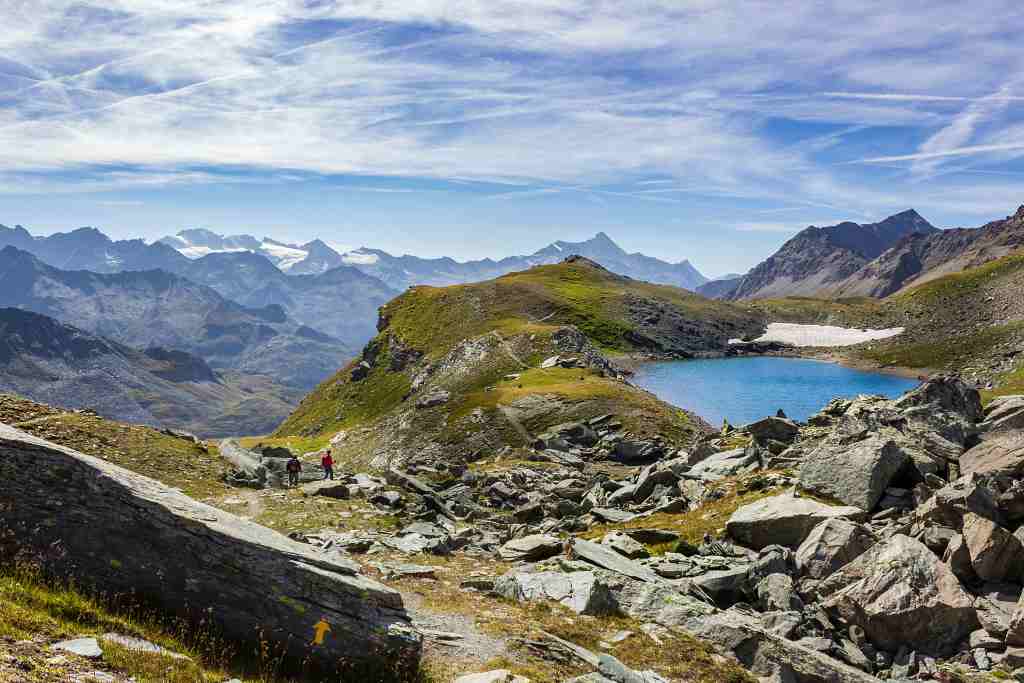
If you still have at least half a day to spend in the mountains, head to Cogne. It is a nice village at the entrance of the Gran Paradiso National Park and you can get there with a 40minutes drive from Aosta. Enjoy some trekking, take some pictures and have a picnic in S. Orso’s Lawns.
Best time to go: May, to experience the nature at its best and to avoid the trekkers that crowd the mountain trails in summer.
What to taste in Northern Italy?
Valle d’Aosta: fontina cheese, fondue and polenta concia (boiled cornmeal with butter and cheese)
Piemonte: stew with Barolo wine, panissa (risotto with beans) and bagna cauda (hot sauce made of anchovies and garlic to be served with raw or boiled winter veggies)
Lombardia: yellow rice (with saffron), pizzoccheri (local pasta shape made of buckwheat) and Milanese veal (breaded and fried veal cutlet)
Liguria: pasta with pesto sauce, focaccia and farinata (a sort of chickpea crêpe)
Friuli Venezia Giulia: frico (a sort of cheese omelette), gubana (soft cake filled with dried fruits) and brovada (turnips cooked in must)
Veneto: baccalà alla vicentina (stockfish with onion and milk), risi e bisi (risotto with peas) and liver with onions
Trentino Alto Adige: canederli (boiled dumplings typical of Austria and Germany), spätzle (local pasta shape made with fresh eggs), speck (local cold cut)
Emilia Romagna: Parmigiano cheese, tortellini, pasta with Bolognese sauce (ground beef and tomato)
The best of each Region
Valle d’Aosta: Gran Paradiso National Park, ski slopes and Roman ruins of Aosta
Piemonte: the Royal Palaces of Turin, the vineyards of Langhe area and Maggiore Lake
Lombardia: Milan’s Cathedral, Como Lake and the Old Town of Bergamo
Liguria: Genoa’s Maritime Museums, Cinque Terre and Portofino
- How to spend one day in Cinque Terre.
- A 2 day Cinque Terre itinerary
- Where to stay in Cinque Terre.
- Things to do in Portofino
Friuli Venezia Giulia: Miramare Castle, Aquileia, and Fusine Lakes
Veneto: Venice, Verona and Treviso’s canals
Trentino Alto Adige: Sass Pordoi, Gardena Valley and ski slopes in general
Emilia Romagna: the Old Town of Bologna, the mosaics of Ravenna and the local gastronomy in general
You might also like:

